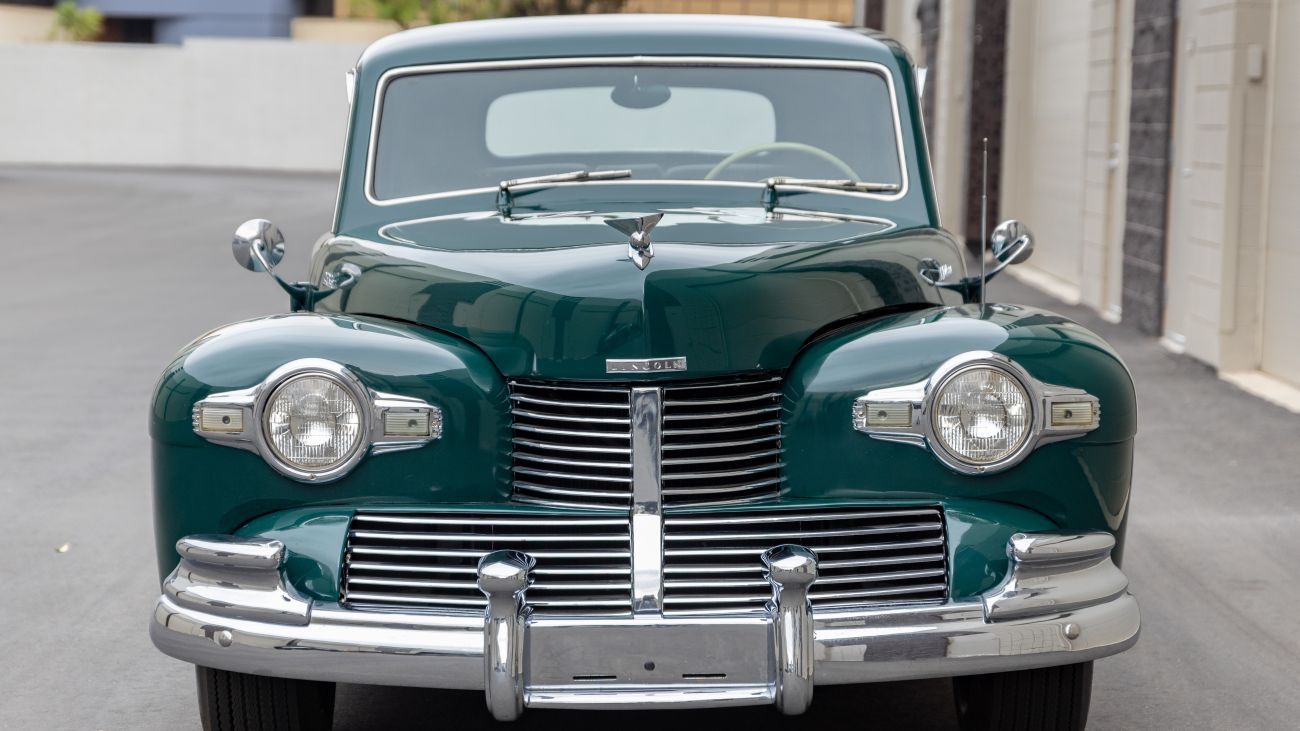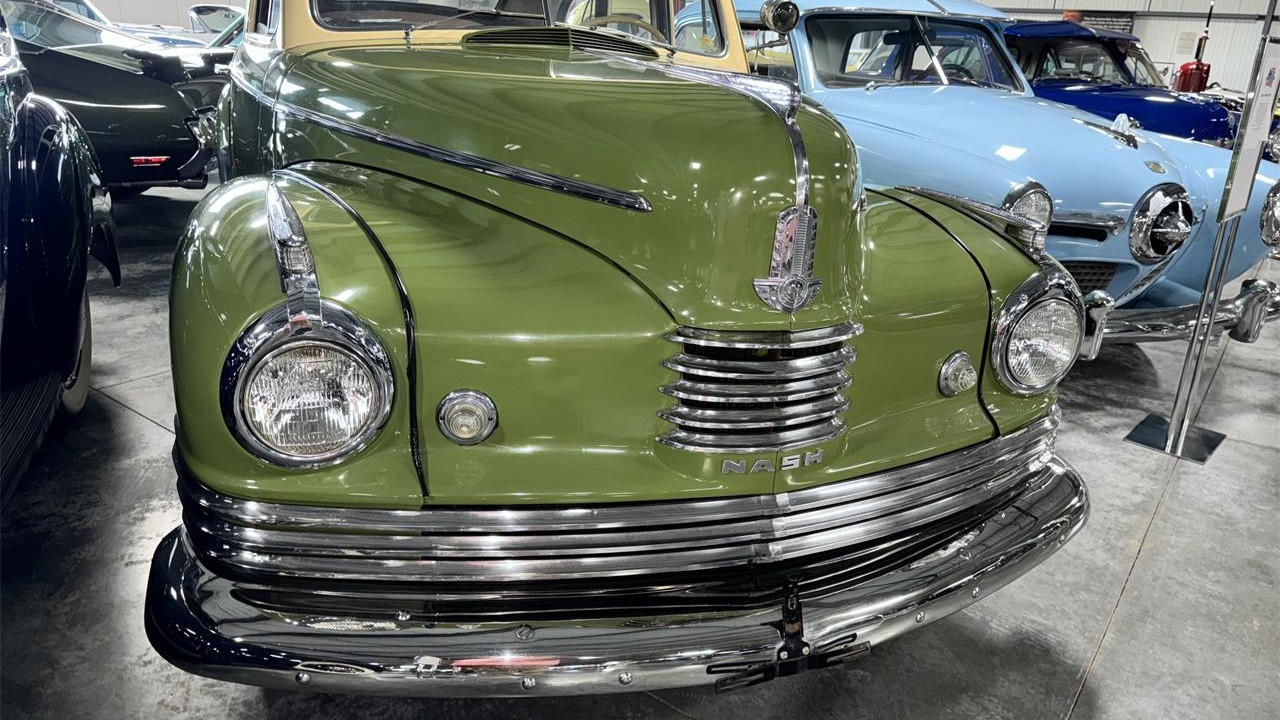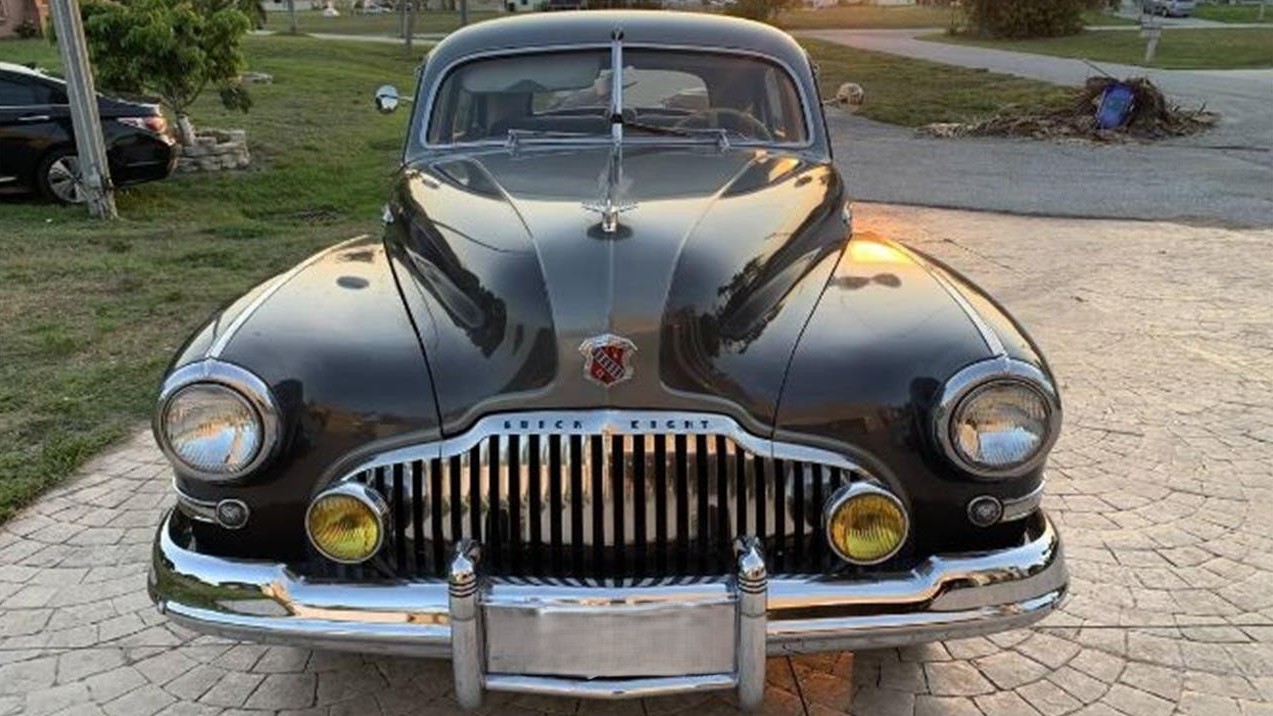When people think of car manufacturing, countries like Germany, Japan, or the United States often come to mind.
Yet, Africa and the Middle East have quietly nurtured a diverse automotive landscape filled with homegrown brands.
From the deserts of Morocco to the urban centers of Iran, visionary inventors and entrepreneurs have created vehicles tailored for local needs and global aspirations.
This article uncovers the remarkable history and unique stories behind 20 lesser-known car brands that are shaping roads and economies across these vibrant regions.
The automotive world is full of surprises. While household names like Ford and Toyota dominate the roads, a host of lesser-known brands continue to craft remarkable cars—often under the radar. Some brands you thought had faded into history are actually thriving in niche markets, producing vehicles that are as unique as they are intriguing.
Join us as we embark on a thrilling journey through time and innovation, uncovering twenty extraordinary cars from brands you might not believe are still alive and shifting gears in today’s ever-evolving automotive landscape.
In North America, we tend to look at V8s as a traditional configuration, but that’s not true with the rest of the world. In Italy, four-cylinders have been the standard, with sixes reserved for the more upscale mainstream cars. Our Pick of the Day is one of those vehicles, but it has the additional twist of coachbuilt design. This 1968 Alfa Romeo 2600 Sprint Zagato is listed for sale on ClassicCars.com by a dealership in the Netherlands.
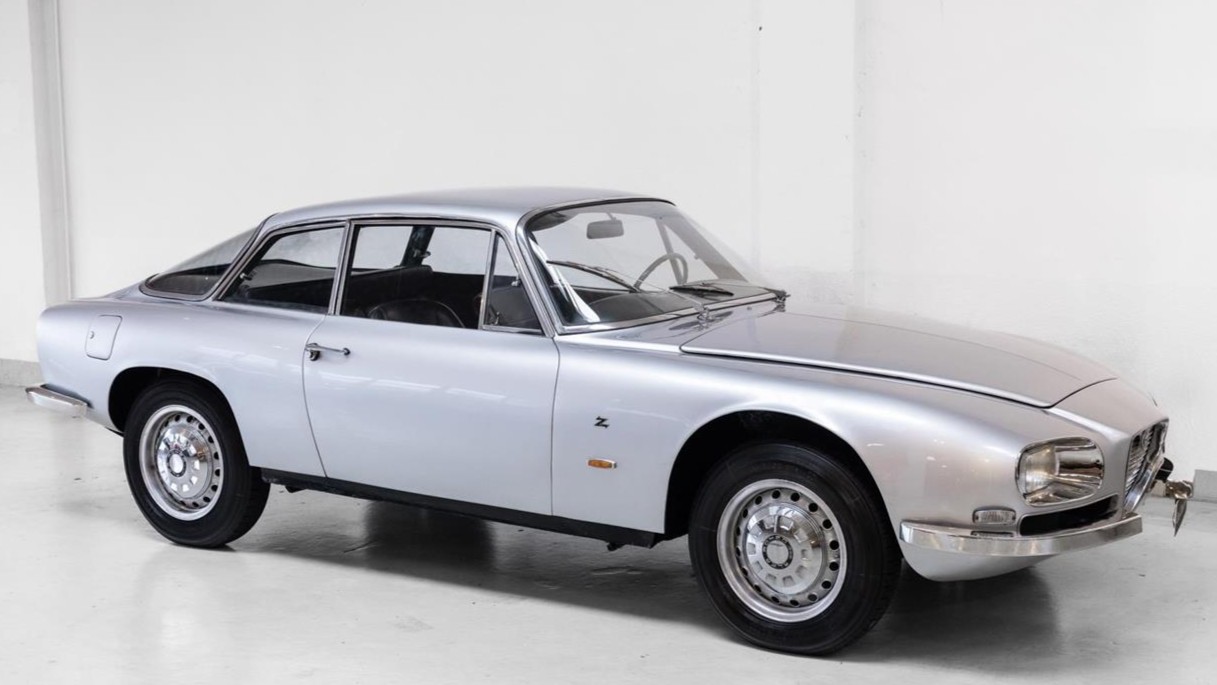
When we think of Alfa Romeos from the 1960s, the one that pops up in people’s minds is the one Dustin Hoffman made famous in The Graduate. That car was sold as the Spider (a.k.a. Duetto), though it was based on the popular Giulia sedan and the Giulia Sprint GT (and variants). Twin-cam inline-fours hooked up to four- and five-speed manuals backed this series.
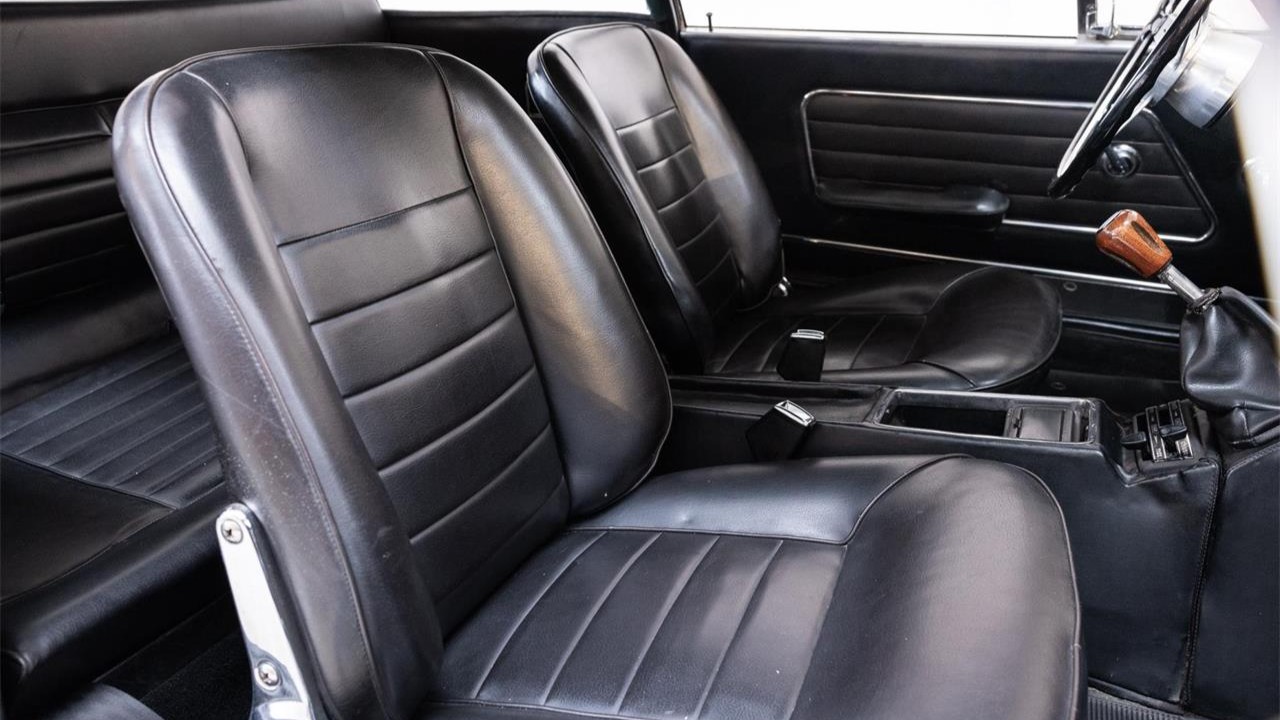
The 2600, on the other hand, was a fancier Italian, a flagship of sorts that was produced from 1962-68. It was available in several different configurations that, like the Giulia and many other mainstream Italian cars, may not have appeared related to each other. All mainstream 2600s were facelifted versions of their predecessor (the 2000), but the 2600 featured an engine upgrade that included two extra cylinders. In European terms, it would be considered an Executive car though, to American sensibilities it would be a tidy mid-sizer or even smaller.

Powering the 2600 was a 2,584cc DOHC straight-six with a pair of Solex carburetors and 8.5:1 compression. With 130 horsepower, this engine powered the Berlina (sedan). You would not be wrong in thinking this would have been the bread-and-butter model, but production was only 2,038 cars out of 11,451. There was also a contemporary de Luxe version by OSI but only 54 were built.

The 2600 Spider looked like a larger version of the Giulietta Spider though with a more imposing front end featuring driving lights almost equal in size to the headlights. It featured an upgraded engine featuring three Solex carburetors and 9.0:1 compression for 15 more horses. This engine was also used in the 2600 Sprint coupe, which was designed by Bertone. Interestingly, this was the biggest seller at 6,999 units.

A special version of this car designed by Zagato was unveiled at the 1965 Frankfurt Motor Show. Bucking the usual Zagato habit of using steel instead of aluminum, this special 2600 Sprint featured styling in the usual Zagato idiom including show-car looks and a more aerodynamic silhouette. Only 105 were built through 1968.
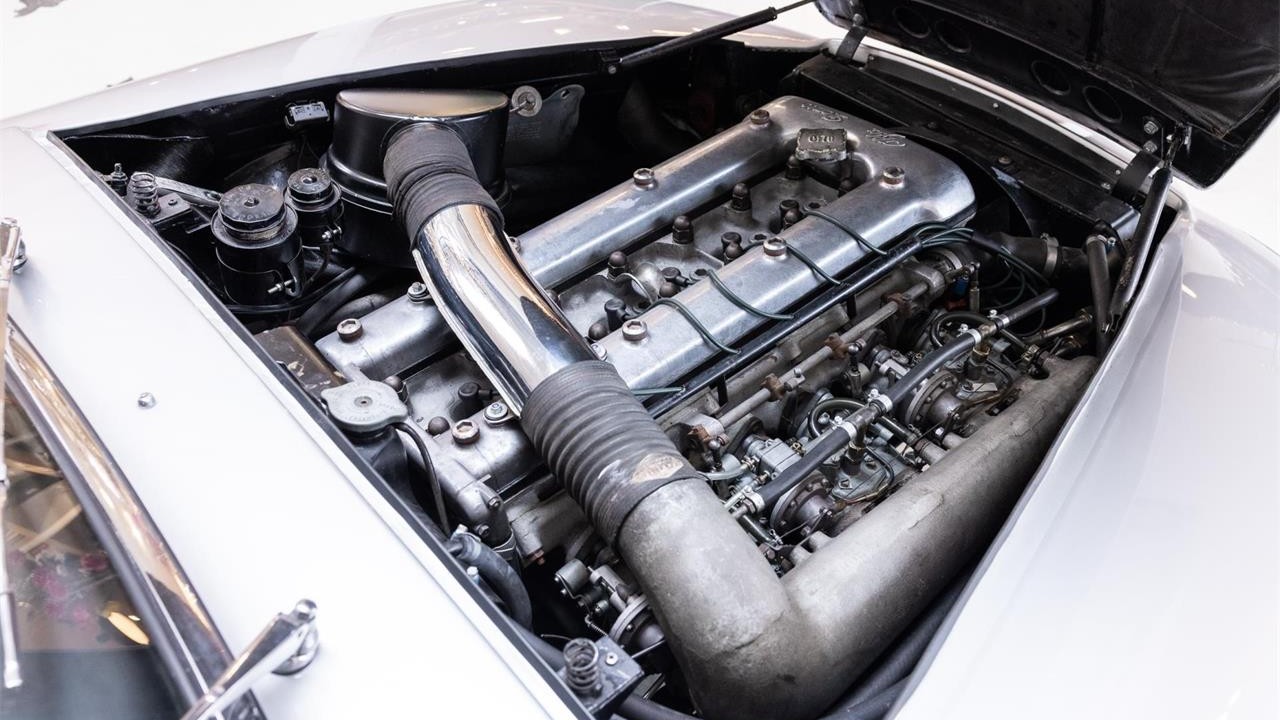
This 1968 Alfa Romeo 2600 Sprint Zagato was originally built for a customer in Switzerland, though it has been with its current owner since 2007. The numbers-matching engine has recently been rebuilt, and the four-disc braking system has been “renewed” to ensure better stopping power. “This is no ordinary vehicle; it is a dynamic work of art that refuses to hide behind the silent walls of a museum and instead dazzles on the catwalk of the streets as an extremely rare and coveted phenomenon,” says the seller.
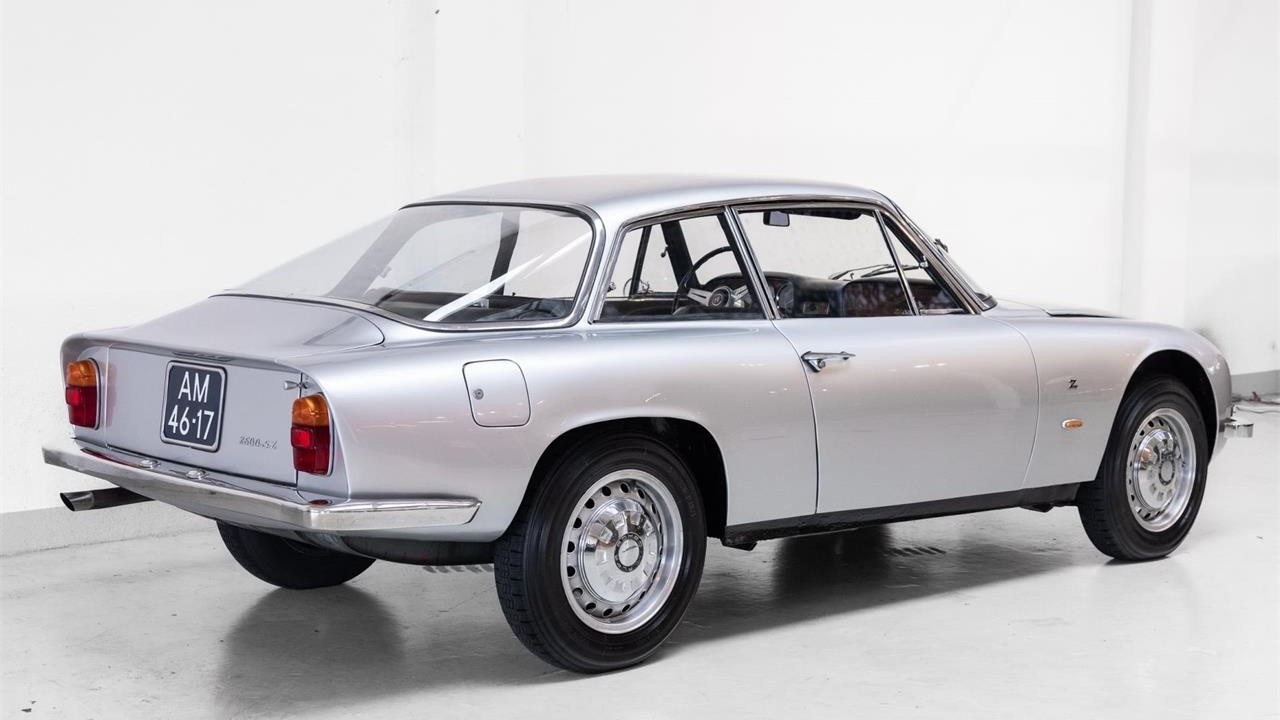
Cutting-edge engineering and design are something that the Italians have done well, though it often features a prancing horse or a trident. Here we have something different, something that will get people asking you questions while others will simply nod with envy. For $225,000 OBO (a hair over a quarter of a million dollars), you can own one of the most darling of Alfas with style that could only come from Zagato.
Click here to view this Pick of the Day on ClassicCars.com
The below vehicles that are currently listed for sale on AutoHunter or ClassicCars.com share something: a model year. Can you identify which?
While you’re at it, can you tell us the brand of each? Post your answers in the Comments section below.
Click on a photo to reveal each car
Every Tuesday, The ClassicCars.com Journal features an automotive puzzle for your enjoyment. You can also access past car games here!
For many automotive enthusiasts, the allure of a supercar is undeniable—jaw-dropping speed, head-turning design, and a raw, engaging driving experience. Yet, the hefty six-figure price tags often put these dream machines out of reach.
Thankfully, there are exceptional cars that deliver supercar thrills at a fraction of the cost.
This carefully curated list spotlights 15 remarkable vehicles that blend exhilarating performance and style, all while remaining surprisingly affordable.
Get ready to discover the cars that let you live the supercar dream without emptying your bank account.
Europe has long stood at the heart of automotive innovation, shaping the way the world moves for over a century.
From legendary marques and groundbreaking technology to infamous failures and scandals, the continent’s car history is a tapestry woven with triumph and turmoil.
This article explores both the brightest milestones and the darkest setbacks in European automotive history, revealing how brilliance and blunders have driven the industry forward—or held it back.
Join us as we journey through the top 10 achievements and the bottom 10 missteps that define Europe’s unique automotive story.
The early 2000s marked a remarkable resurgence of American muscle cars, blending the unmistakable attitude of classic designs with cutting-edge engineering.
Automakers tapped into nostalgia, reviving legendary nameplates and infusing them with modern performance, reliability, and safety.
This era saw Detroit’s icons return to the streets with bold styling, throaty exhausts, and high-output engines—delighting enthusiasts old and new.
As years pass, a select group of these machines is rapidly gaining collector status.
Let’s explore 15 early 2000s muscle cars that are destined to become tomorrow’s most coveted classics.
When Ford introduced its 1963 full-size models, hardtops featured a Thunderbird-inspired roofline. If you wanted the ultimate in performance, your only choice was the carry-over 406, available in 385- and 405-horse flavors (four-barrel and tri-carb, respectively). However, mid-year 1963, Ford introduced the Sports Hardtop body style, which featured a sleeker look—perfect for NASCAR. At the time, Ford also introduced an upgrade to the 406, now measuring 427ci. With 410 or 425 horsepower (four-barrel or dual-quads), the 427 was the engine that truly created a Ford legend through six model years and plenty of racing wins—most notably Le Mans. Our AutoHunter Spotlight is on this 1963½ Ford Galaxie 500/XL Sports Hardtop that features the “R-code” 427 with four-speed manual, nine-inch rear with limited-slip, aftermarket mags, and more. Finished in red over white vinyl interior, this early muscle car comes from the selling dealer with a clear title.
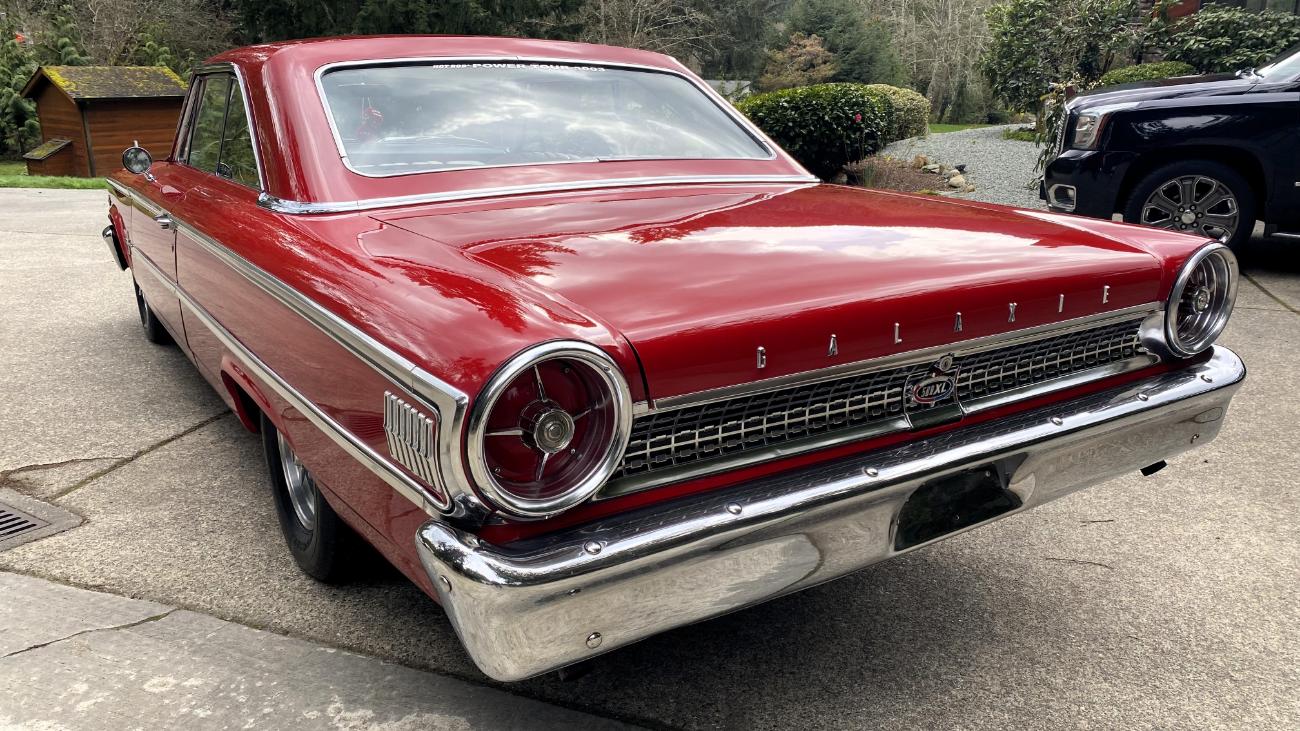
This car was originally painted in Rose Beige but, along the way, it was repainted red. Exterior features include a driver-side chrome mirror and a set of 15-inch mag wheels with spinners wrapped in staggered-width Michelin radials—225/70 (front) and 255/65 (rear).

The original White and Rose Beige interior has been replaced with White with Black components. Being an XL, bucket seats and console were the name of the game. A Hurst shifter, AM/FM radio (currently inoperable), and clock are several interior features.
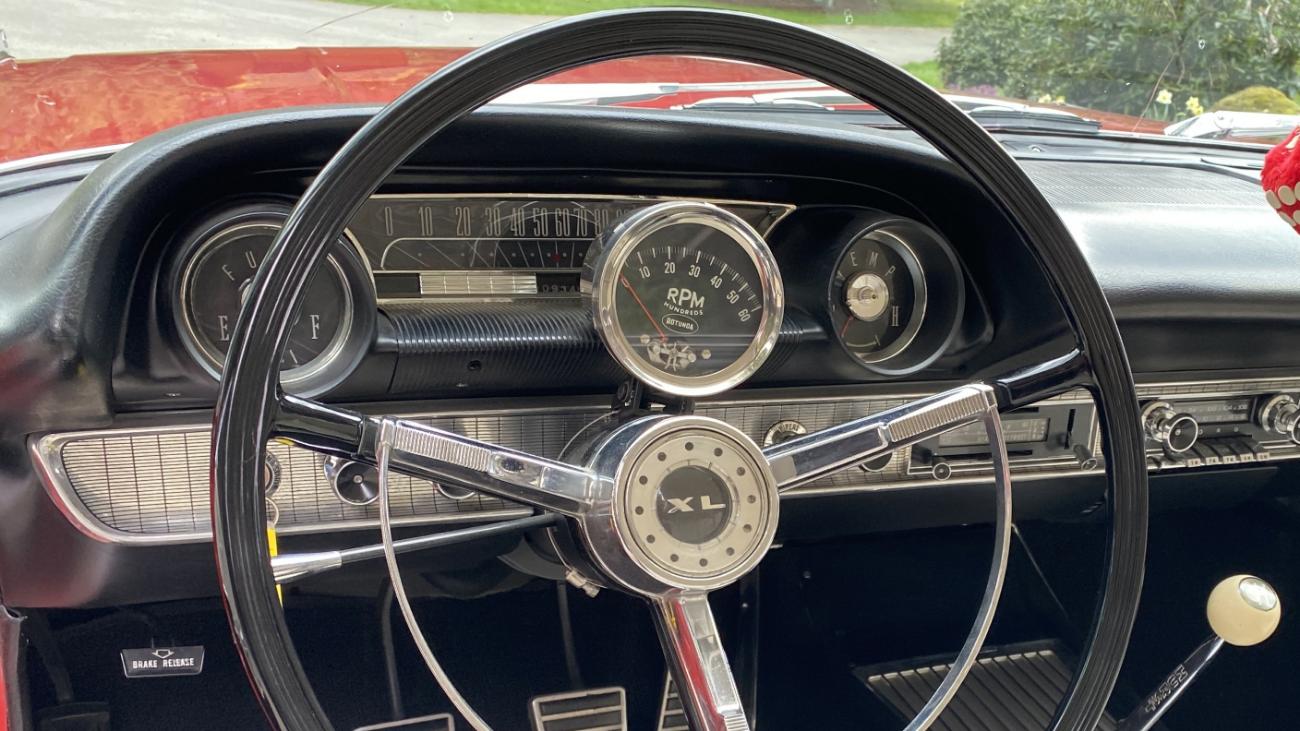
The instrument panel includes a 120-mph speedometer and gauges for the temperature and fuel. A column-mounted 8,000-rpm tachometer (currently inoperable) sits right in the line of sight. The odometer shows 30,967 miles, though the mileage is not indicated on the title.
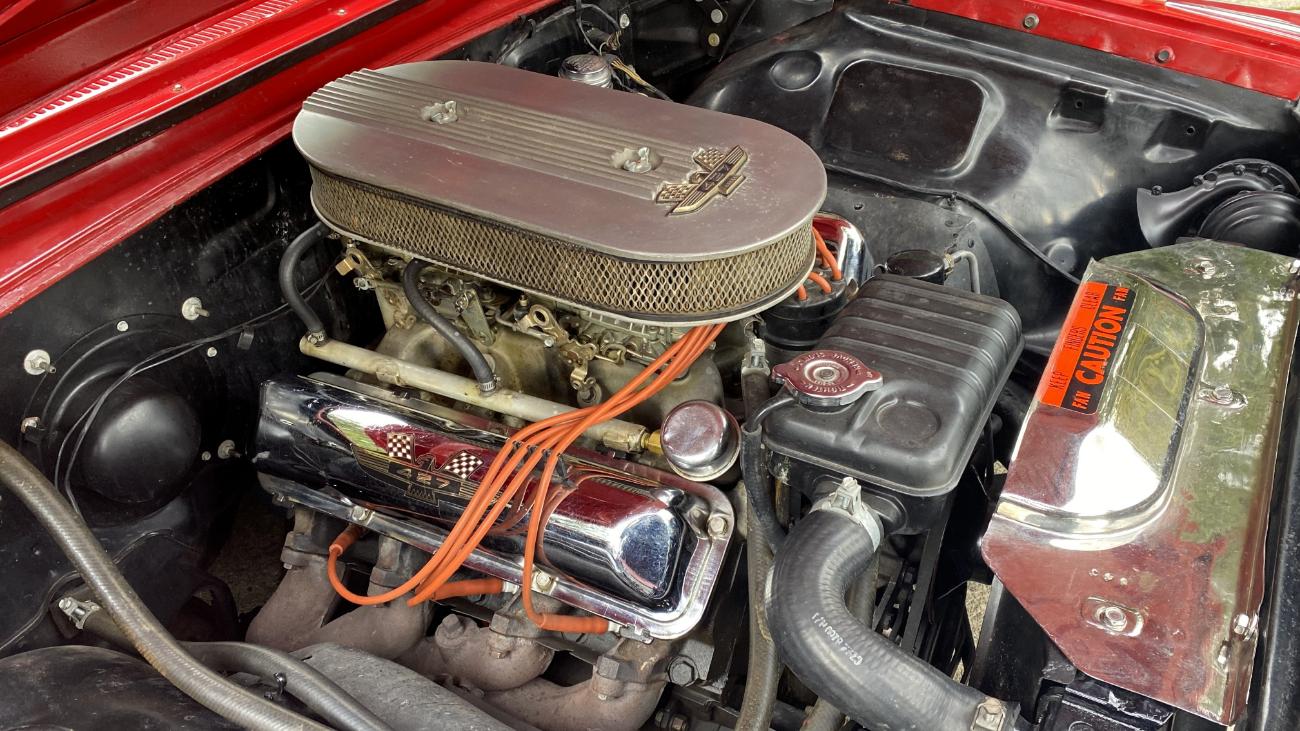
The engine is an authentic dual-quad 427 as evidenced by the code “R” in the VIN. It is backed by a Borg-Warner T-10 four-speed manual transmission.
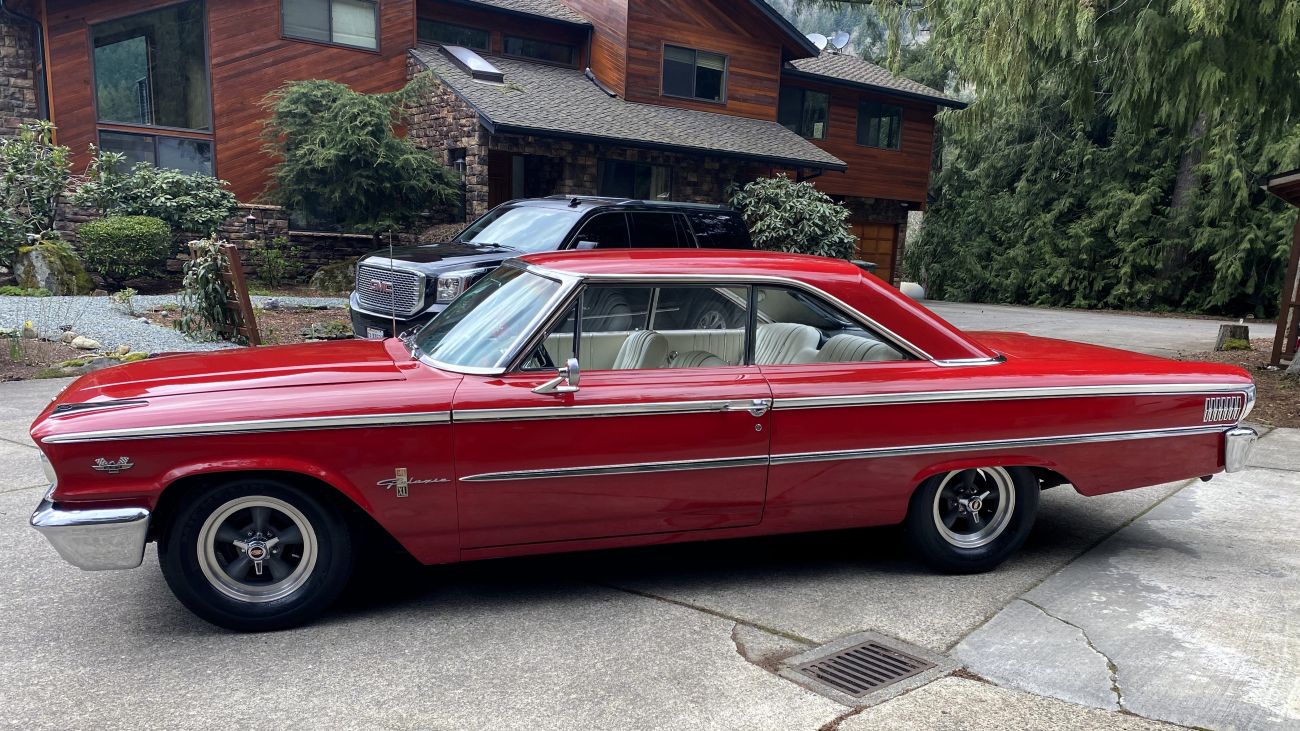
The undercarriage features a tough nine-inch rear with 3.00 gears plus limited slip, though the originals were 4.11s. Drum brakes are at all four corners. And, of course, for an engine of this caliber, there is a dual exhaust system.
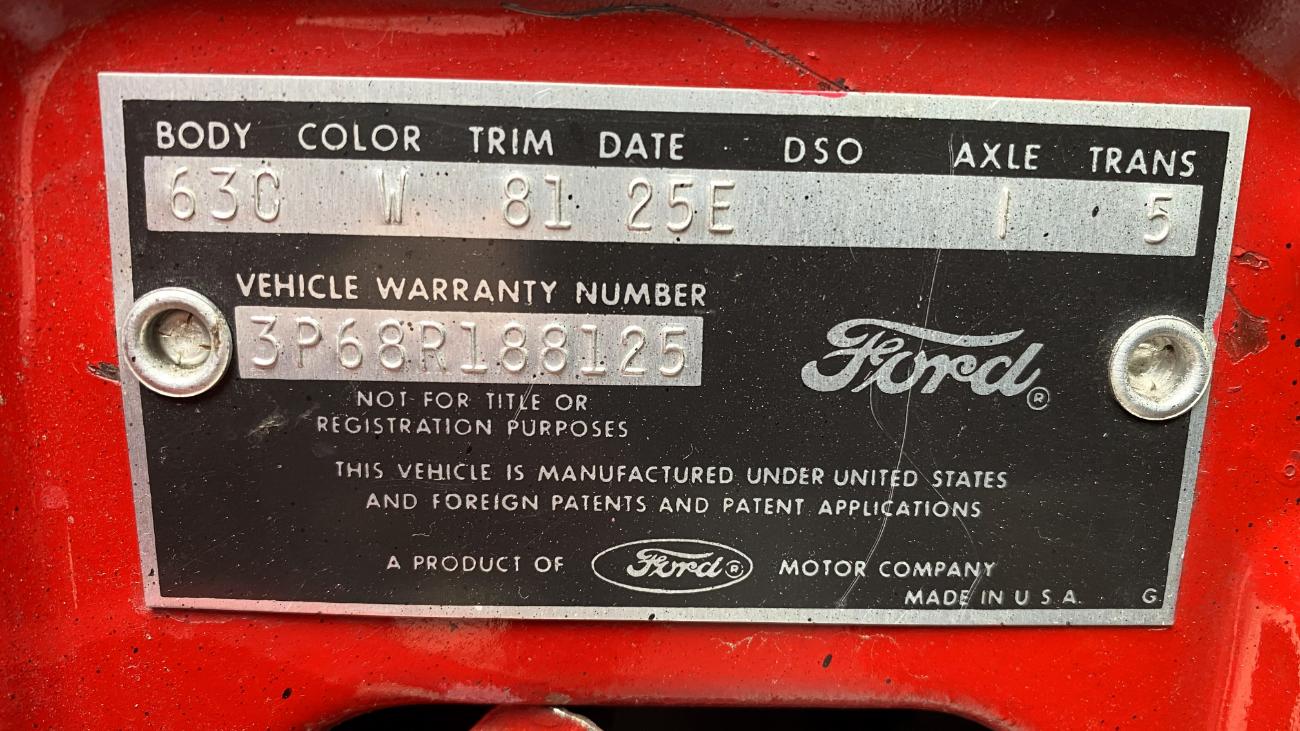
Early Ford muscle cars have a distinction that few can match: as much horsepower as any American brand, and good looks that rival any mainstream vehicle of the period. Add the stylish interior that was part of the XL trim level and this R-code 1963½ Galaxie 500/XL Sports Hardtop stands tall among 1960s American cars. Plus, if you look up what it would look like with the original hue and interior, you’ll realize what a pretty car this is. Curious? Keep tabs on this car by plugging the end date on your smart phone because you don’t want to miss the auction deadline of Friday, June 13, 2025, at 12:45 p.m. (PDT).
Visit the AutoHunter listing for more information and a photo gallery
It’s been more than 20 years since Cadillac unveiled the CTS-V, the first model in its high-performance V sub-brand, showing the world that it could produce vehicles beyond cushy sedans for octogenarians to drive slowly to the grocery store. Since then, Cadillac has made V versions of coupes, four-doors, wagons, and even the Escalade. It’s done the same with its electric vehicles, the newest of which is the 2026 Optiq-V.
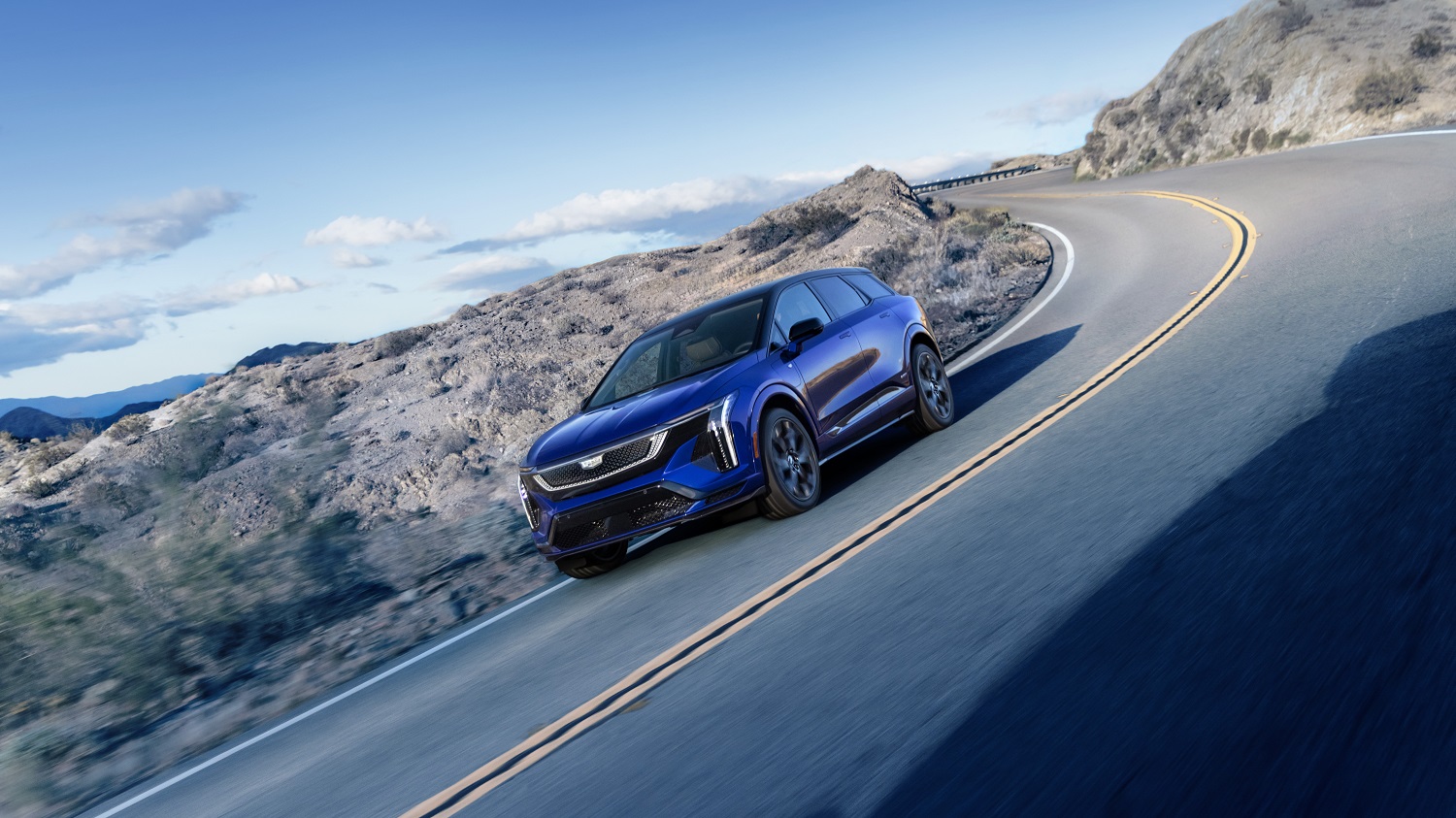
To differentiate the Optiq-V from its tamer Optiq sibling, Cadillac gave it a different front fascia with V-pattern mesh in the lower grill, a glossy black front splitter, body-color lower trim, and a glossy black rear diffuser. The standard 21-inch wheels have a satin graphite finish and come wrapped in all-season or optional summer performance tires; polished and painted 21s with a dark finish are also available. For a more aggressive look, there’s a carbon fiber package that includes a front splitter, rear diffuser, and rear mid-spoiler made out of the lightweight material.
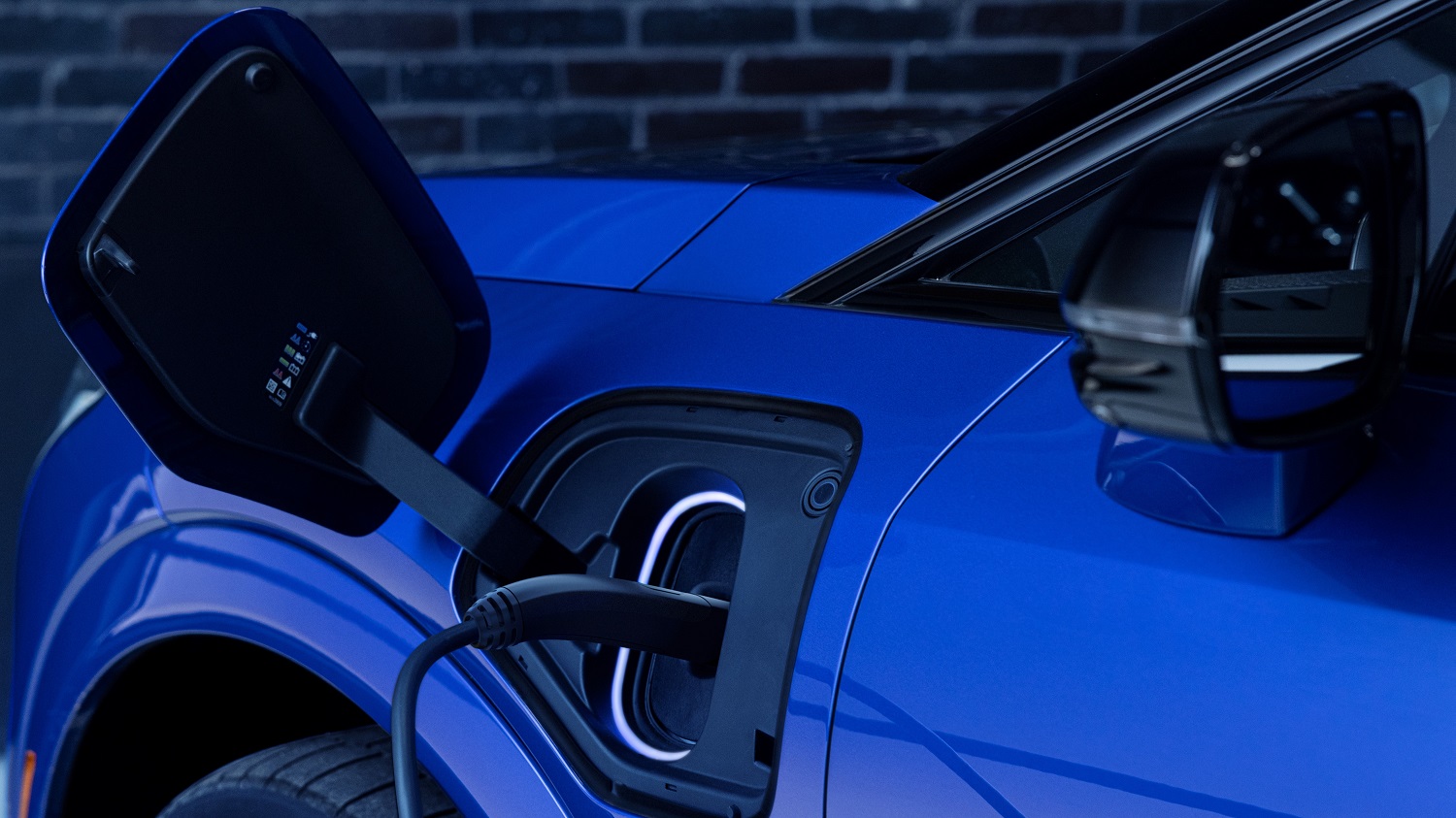
Two limited-edition exterior colors join the palette of paint choices: Magnus Metal Frost and Deep Ocean Tintcoat. There’s more blue on the rear quarter windows, which feature blue accents inspired by the V-Series badge. If that’s not enough, royal blue brake calipers are an option. No matter which color the Optiq-V wears, it comes with Brembo front calipers and a black roof with a panoramic fixed glass panel. Most importantly, all Optiq-Vs are equipped with an NACS (North American Charging Standard) charging port—a first for a General Motors vehicle.

There are two available interior color schemes: Noir and Noir/Sky Cool Gray, both of which have blue accents. Technically, they’re Santorini Blue, which Cadillac says, “evokes the energy, action, and excitement associated with innovation and high performance.” You can even step things up to Santorini Blue seatback panels and matching seatbelts. If for some reason you don’t feel like driving, you can let the standard Super Cruise system do it for you and watch it take you closer to your destination on the 33-inch LED infotainment display while you enjoy the sound of the 19-speaker AKG Studio Audio System.
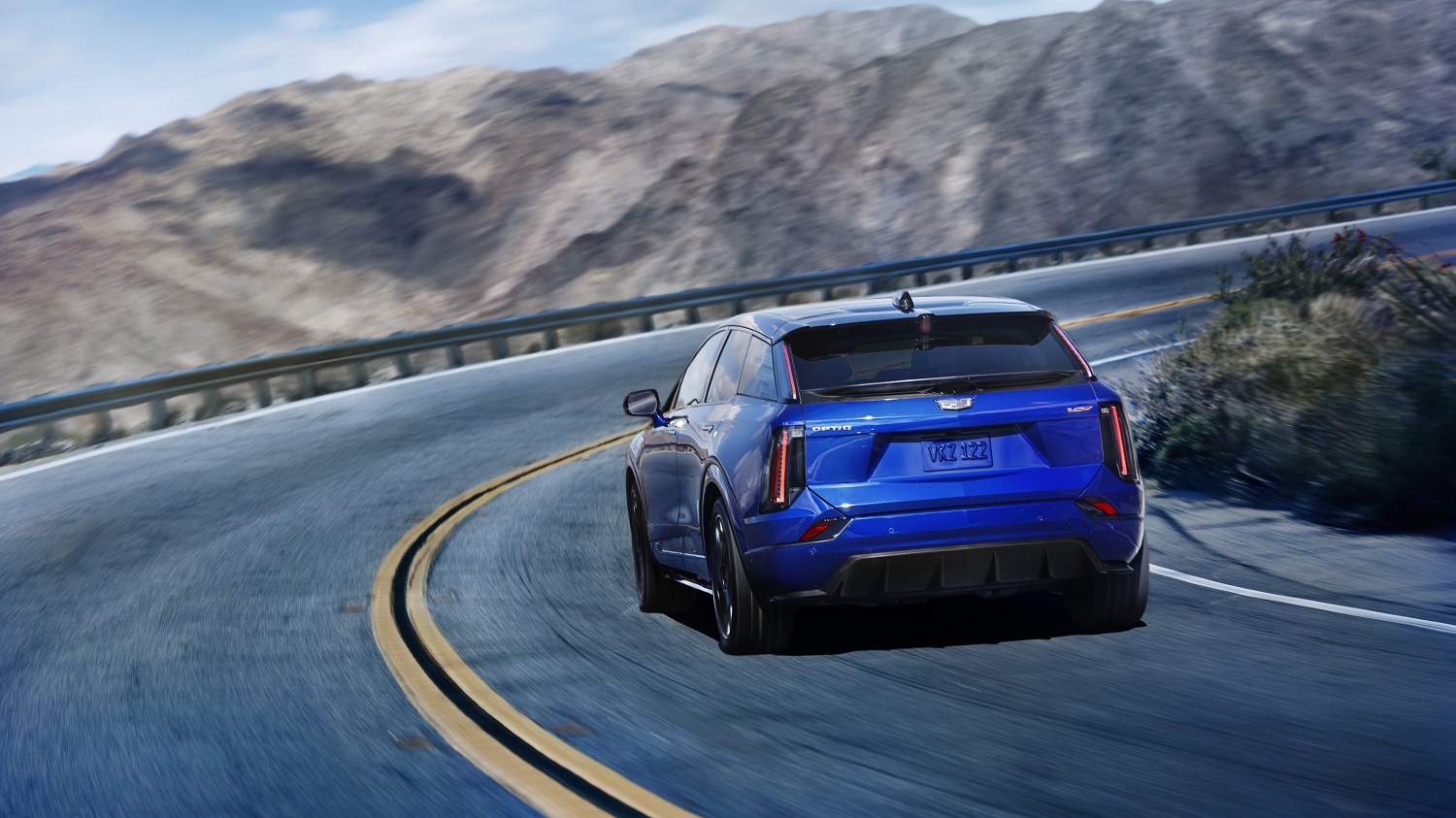
Like the regular Optiq, the V-Series model is equipped with an 85-kilowatt-hour battery pack connected to dual-motor all-wheel drive. Range is down from 302 to 275 miles, but output is way up from 300 horsepower and 354 lb-ft of torque to 519 and 650, respectively. The Optiq-V’s Velocity Max mode unleashes the full potential of all that power. Launch Control focuses it on straight-forward acceleration, enabling the Optiq-V to reach 60 mph in only 3.5 seconds—0.4 seconds ahead of the CT4-V Blackwing with the six-speed stick (and only a tenth behind the 682-horsepower CT5-V Blackwing with the same gearbox).
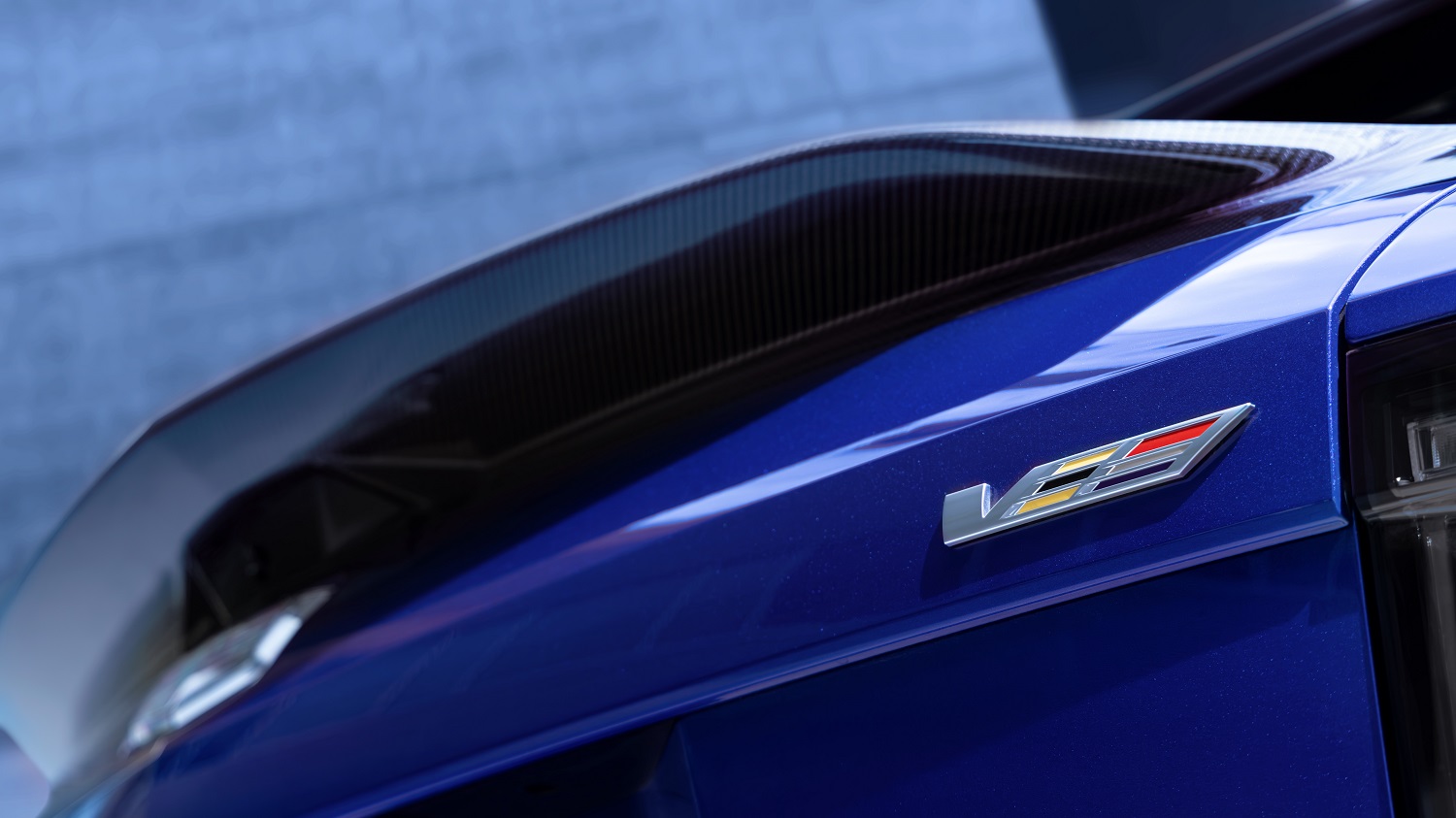
The 2026 Cadillac Optiq-V will go into production this fall and carry a starting price of $68,795. When will it be drag-raced against a gas V-Series vehicle? Probably shortly after it hits the streets.
For decades, the sports car world revered the manual transmission—its tactile feel and driver engagement were unmatched.
However, automatic transmissions have evolved dramatically, boasting rapid shifts, advanced technology, and performance that often eclipses their manual counterparts.
Today, some of the most thrilling sports cars offer automatics that deliver not just convenience, but superior speed, precision, and efficiency.
In this article, we explore 15 standout sports cars where the automatic transmission doesn’t just compete—it dominates the driving experience.

